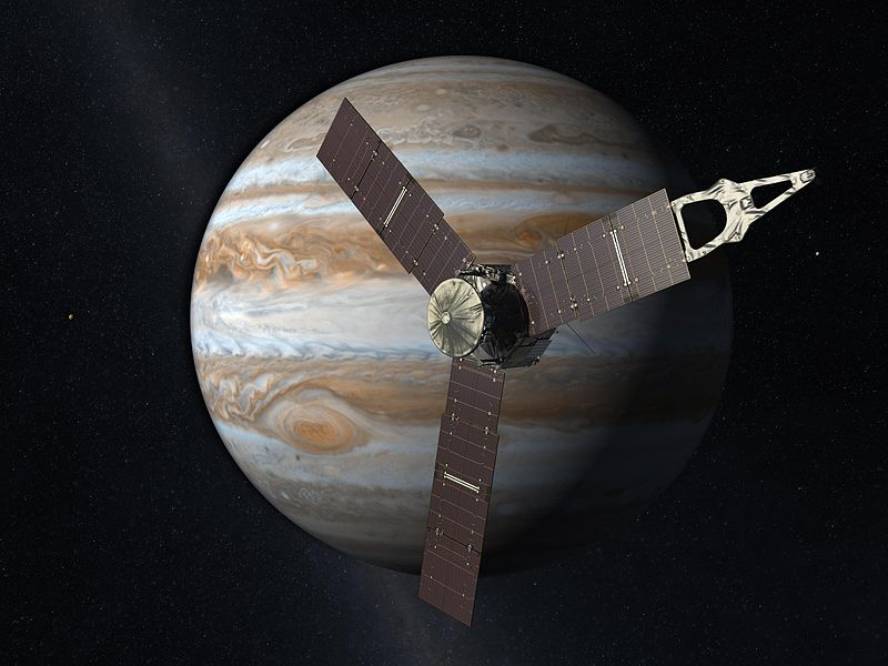The probe Juno is found in the orbit of Jupiter
Text created by automatic translator Elia and has not been subsequently revised by translators. Elia Elhuyar
Juno's main objective is to analyze the creation and evolution of Jupiter. The energy it needs for it, as it has done throughout the journey, will take it from the Sun, which singling out the mission, since the probes have used nuclear energy in the missions that have been carried out to date to Jupiter. However, Juno has solar panels in her three arms. In order to enter orbit, the probe engines have had to burn 447 kg of fuel (hydrazine and oxidizer).
The orbit entry manoeuvre was not easy and NASA members following the mission have applauded the data confirming that everything has come out as planned.
Juno is now willing to investigate the composition, atmosphere and magnetosphere of Jupiter in the coming months. To carry out this work they have had to put special protection to the probe, which should act in very demanding conditions. In fact, Jupiter emits a lot of radiation and runs the risk that the devices will deteriorate. To avoid this risk as far as possible, Juno will perform a polar orbit, which aims to complete 37.
For information on Jupiter, Juno has nine tools, among which are radiometers microwaves and an infrared spectrometer for the study of clouds, an energy particle detector and a magnetometer. The data collected with everyone expects those responsible for the mission to better know not only the origin of Jupiter, but also the origin of the Solar System. In the coming months they will be reporting on it.







